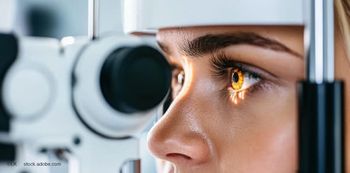
Taking care of your patients’ eyes in a digital world
It is important for patients to understand what digital eye strain is and its causes.
As we live in an increasingly digital world, it’s vital to understand the impact that screen time can have on patients’ overall eye health.
Studies suggest that individuals spend upwards of 13 hours looking at a screen every day. This number is likely to continue to increase with hybrid work environments that require daily video calls and the immediacy of streaming entertainment.
Not taking preventative measures, can potentially cause many negative effects to your patients’ eye health, including dry, burning and itchy eyes, blurred vision, and headaches.
It is important for patients to understand what digital eye strain is and its causes. Blinking rates dramatically decrease when working on a computer, ultimately causing irritating, or even painful, symptoms. The contrast of text against a background on a computer screen can be harmful on the eyes. Though the increase of digital screen time is unlikely to end soon, there are several methods individuals can take to lessen the symptoms of computer vision syndrome.
Here are a few approaches you can encourage your patients to take:
- Place the computer screen about 2 feet away from the face, and below eye level.
- Change the lighting on the monitor to reduce the glare and harsh reflections that cause eye strain. Glare filters can be placed over digital screens to help minimize this problem.
- Practice the “20-20-20” rule when taking breaks: Looking away from the screen every 20 minutes and focusing on an object 20 feet away for at least 20 seconds.
- Close their eyes for a brief period and blink repeatedly. This will help spread tears evenly and release necessary oils for a healthy tear film.
- Make sure room lighting is bright. If the screen is brighter than surroundings, it can be very irritating to the eyes.
- If your patients wear contact lenses, encourage them to give their eyes a break by wearing their glasses.
- Get regular eye exams. Patients may need certain glasses when working on a computer such as blue-light filtering glasses.
In addition to these tips for preventing digital eye strain, it is important for your patients to implement other eye-healthy habits such as wearing protective eyewear, cleaning their hands and contact lenses properly, maintaining a healthy lifestyle, regularly getting eye exams, avoiding smoking, and being aware of the family’s eye health history. These simple steps can make a huge impact on contributing to patients’ eye overall health.
Newsletter
Don’t miss out—get Ophthalmology Times updates on the latest clinical advancements and expert interviews, straight to your inbox.













































.png)


